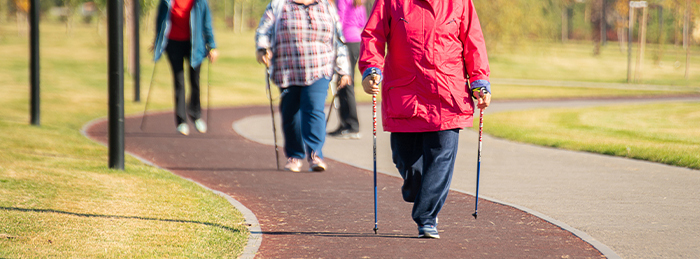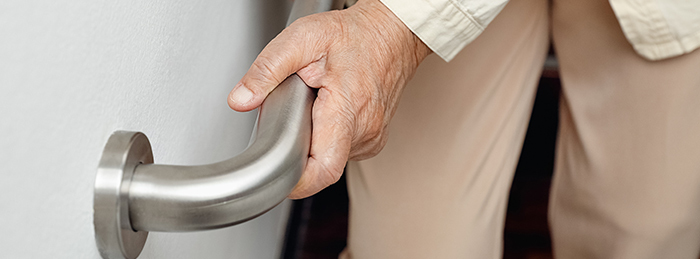Preventing Falls: A Comprehensive Guide for Older Adults
Falls are a significant health concern for older adults, with over one in four Americans aged 65 and older experiencing a fall each year. These incidents can lead to severe injuries, such as hip fractures and traumatic brain injuries (TBI), resulting in substantial healthcare costs that were estimated to total $80 billion in 2020. Falls are not an inevitable part of aging and can be prevented through practical lifestyle adjustments and evidence-based programs.
The Importance of Preventing Falls in the Elderly
The financial toll for older adult falls is expected to increase as the population ages, potentially reaching over $101 billion by 2030. Falls are the leading cause of fatal and nonfatal injuries for older Americans yet falling is not an inevitable result of aging. Through practical lifestyle adjustments, evidence-based fall prevention programs, and clinical-community partnerships, the number of falls among older adults can be substantially reduced.
Understanding the Risk Factors for Falls
Falls often result from a combination of risk factors. Identifying and addressing these can significantly reduce the likelihood of falling:
- Lower body weakness: Strengthening exercises can help mitigate this risk.
- Vitamin D deficiency: Adequate Vitamin D intake improves bone health and muscle function.
- Difficulties with walking and balance: Balance training and physical therapy are beneficial.
- Medication side effects: Certain medications, such as tranquilizers and sedatives, can affect balance. Regular medication reviews with a healthcare provider are crucial.
- Vision problems: Regular eye exams and proper eyewear are essential.
- Foot pain or poor footwear: Supportive, well-fitting shoes can reduce the risk of falls.
- Home hazards: Preventing falls in the home is important. Removing tripping hazards like throw rugs and clutter, and installing safety features such as grab bars, enhances home safety.
Practical Strategies for Preventing Falls in the Elderly
Implementing a combination of personal and environmental strategies can prevent falls effectively. Here are some tips to prevent falling:
- Increase Physical Activity: Regular physical activity improves balance, strength, and coordination. Exercises such as tai chi, yoga, and strength training are particularly beneficial and can significantly reduce the risk of falls.
- Modify Your Home: Make your home safer by removing tripping hazards, installing grab bars in bathrooms, using good lighting, and adding non-slip mats. These simple changes can prevent many falls.
- Regular Health Check-ups: Regular check-ups with healthcare providers can help manage health conditions that increase the risk of falls. Vision and hearing checks, medication reviews, and assessments for osteoporosis are crucial. Use assistive devices like canes or walkers correctly and keep them in good condition.
- Community Programs: Participate in community-based fall prevention programs, which offer education and support to stay safe. These programs provide evidence-based strategies to reduce falls.
- Manage Medications: Some medications can increase the risk of falling due to side effects like dizziness or drowsiness. Regular reviews with a healthcare provider can help manage these risks.
- Vision and Hearing Care: Poor vision and hearing can increase the risk of falls. Regular eye exams and hearing tests help detect and correct issues. Wear glasses or hearing aids as prescribed.
The Impact of Falls on Quality of Life
Falls, with or without injury, also carry a heavy quality of life impact. A growing number of older adult’s fear falling and as a result limit their activities and social engagements. This can lead to further physical decline, depression, social isolation, and feelings of helplessness. Addressing the fear of falling is an important aspect of fall prevention.
Encouraging older adults to stay active and engaged in their communities can help reduce the fear of falling. Social activities, exercise classes, and community events can provide opportunities for physical activity as well as social interaction, both important for maintaining physical and mental health.
National Falls Prevention Awareness
The National Council on Aging (NCOA) leads the National Falls Prevention Resource Center, which supports awareness and educational efforts about falls and promotes evidence-based falls prevention programs and strategies across the nation. The purpose of the center is to increase public awareness and educate consumers and professionals about the risks of falls and tips on how to prevent falls.
The NCOA initiative includes a coalition of over 70 national organizations working toward progress on strategies outlined in the National Action Plan. These members disseminate proven falls prevention programs, advocate for funding and regulatory changes, and educate professionals, older adults, and caregivers about how they can reduce their risk of falling.
The Role of PHI Air Medical in Medical Emergencies
Air medical transport can be lifesaving, especially in rural or hard-to-reach areas where immediate medical attention is critical. In the unfortunate event of a fall-related injury requiring emergency medical attention, PHI Air Medical provides emergent air medical transport. This air ambulance service ensures that patients receive prompt and efficient care, which is crucial in medical emergencies.
However, insurance coverage for such emergencies often does not cover the full cost of an air medical flight, leaving patients with significant out-of-pocket expenses. Many insurance plans have limited coverage for air medical transport, resulting in unexpected financial burdens for families during already stressful times. PHI Cares offers an air ambulance membership program.
Financial Protection with PHI Cares Air Ambulance Membership
This is where the PHI Cares air ambulance membership becomes invaluable. This membership program protects families from unexpected costs, ensuring that in an emergency, they are not burdened with financial stress. PHI Cares Membership offers household coverage, including zero out-of-pocket costs for medically necessary flights, providing peace of mind and financial protection for families.
PHI Cares air ambulance insurance covers both scene calls and inter-facility transfers, giving members access to emergency air medical services whenever and wherever they need them. This air ambulance membership can be particularly beneficial for older adults who are at a higher risk of falls and other medical emergencies.
Partnering with Medical Guardian for Enhanced Safety
At PHI Air Medical, our team takes falls prevention very seriously. To further support our members, we have partnered with Medical Guardian, a leading provider of medical alert devices, to offer substantial discounts as part of our PHI Care More program.
Medical Guardian provides award-winning medical emergency alert systems that work both at home and on-the-go. This partnership ensures that PHI Cares members have access to immediate help in the event of a fall, further reducing the risks and providing peace of mind. By integrating these alert systems into our members’ daily lives, we are enhancing their safety and supporting our overall dedication to falls prevention.
Fall Causes & Prevention: Conclusion
By combining fall prevention efforts with the security provided by PHI Air Medical , PHI Cares Membership, and Medical Guardian, older adults can better manage their health and safety, achieving a higher quality of life and preparedness in case of an emergency. It is crucial for older adults and their caregivers to be proactive in falls prevention by staying active, making homes safer, and seeking regular health check-ups to address vision problems and other risk factors. With these measures, the number of falls among older adults can be substantially reduced, leading to healthier and safer lives for our aging population.
To enroll in PHI Cares for around $6 to $8 per month visit PHICARES.COM.





